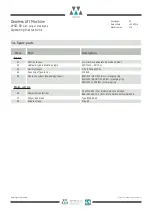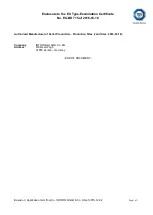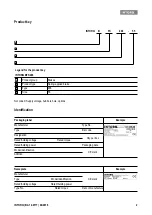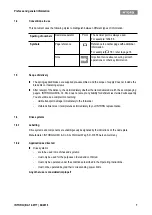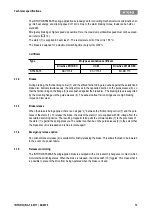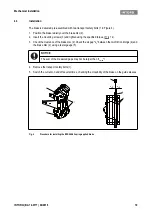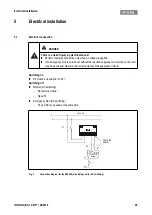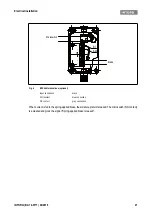
Preface and general information
INTORQ | BA 14.0177 | 04/2016
6
Q
Smax
J
Maximally permissible friction energy for cyclic switching, depending on
the switching frequency
R
m
N/mm
2
Tensile strength
R
N
Ohms
Rated coil resistance at 20 °C
R
z
μ
m
Averaged surface roughness
S
h
1/h
Switching frequency: the number of switching operations evenly spread
over the time unit
S
hue
1/h
Transition switching frequency, thermal parameter of the brake
S
hmax
1/h
Maximum permissible switching frequency, depending on the friction
energy per switching operation
s
L
mm
Air gap: the lift of the armature plate while the brake is switched
s
LN
mm
Rated air gap
s
Lmin
mm
Minimum air gap
s
Lmax
mm
Maximum air gap
s
HL
mm
Air gap for manual release
t
1
ms
Engagement time, sum of the delay time and braking torque - rise time
t
1
= t
11
+ t
12
t
2
ms
Disengagement time, time from switching the stator until reaching 0.1
M
dyn
t
3
ms
Slipping time, operation time of the brake (according to t
11
) until stand-
still
t
11
ms
Delay during engagement (time from switching off the supply voltage to
the beginning of the torque rise)
t
12
ms
Rise time of the braking torque, time from the start of torque rise until
reaching the braking torque
t
ue
s
Overexcitation time
U
V
Voltage
U
H
V DC
Holding voltage, after voltage change-over
U
L
V DC
Release voltage, before voltage change-over
U
N
V DC
Rated coil voltage; in the case of brakes requiring a voltage change-
over, U
N
equals U
L
Letter symbol
Unit
Designation
Summary of Contents for Beamer 2 Series
Page 36: ......
Page 37: ......
Page 41: ......



